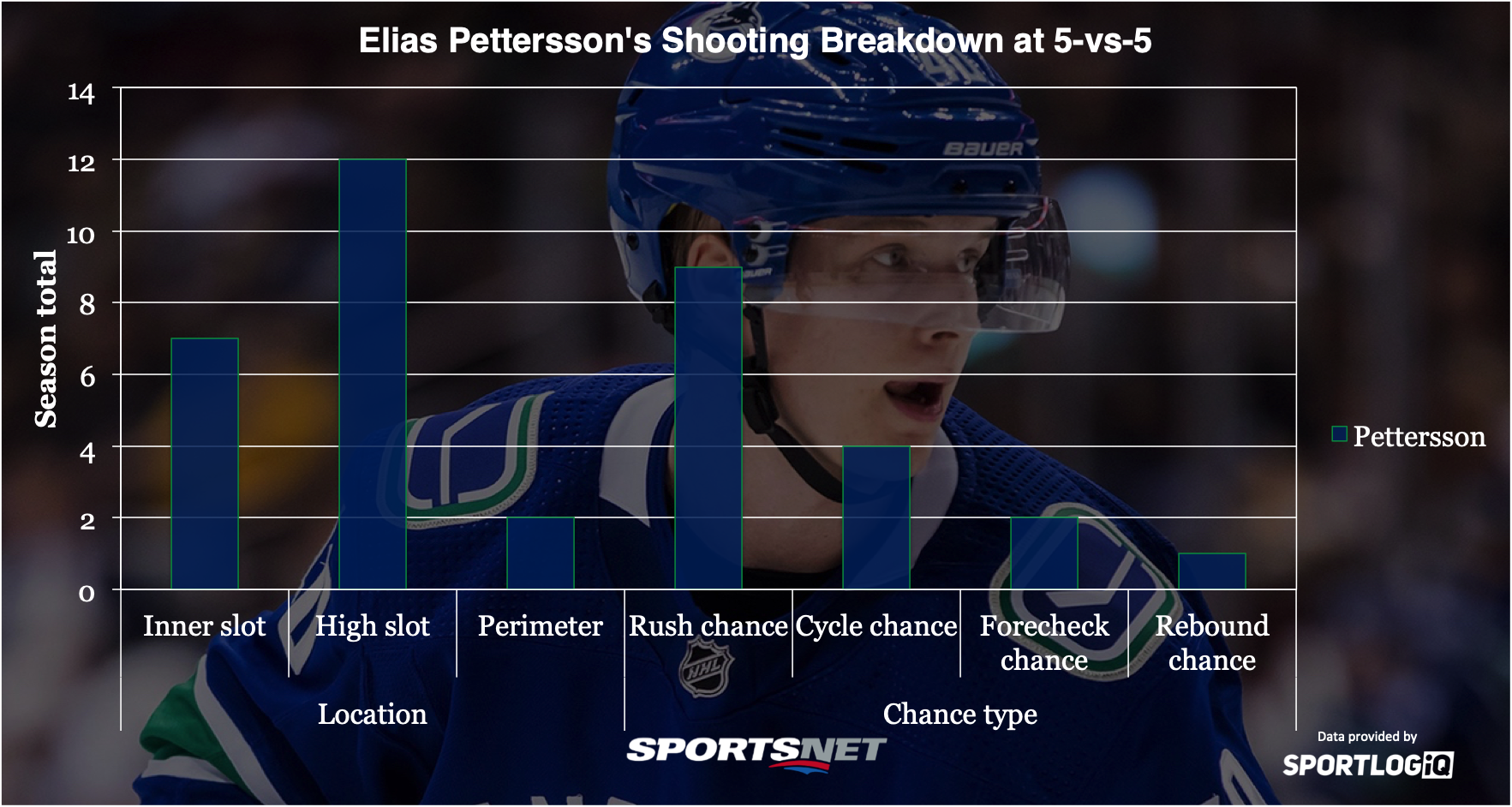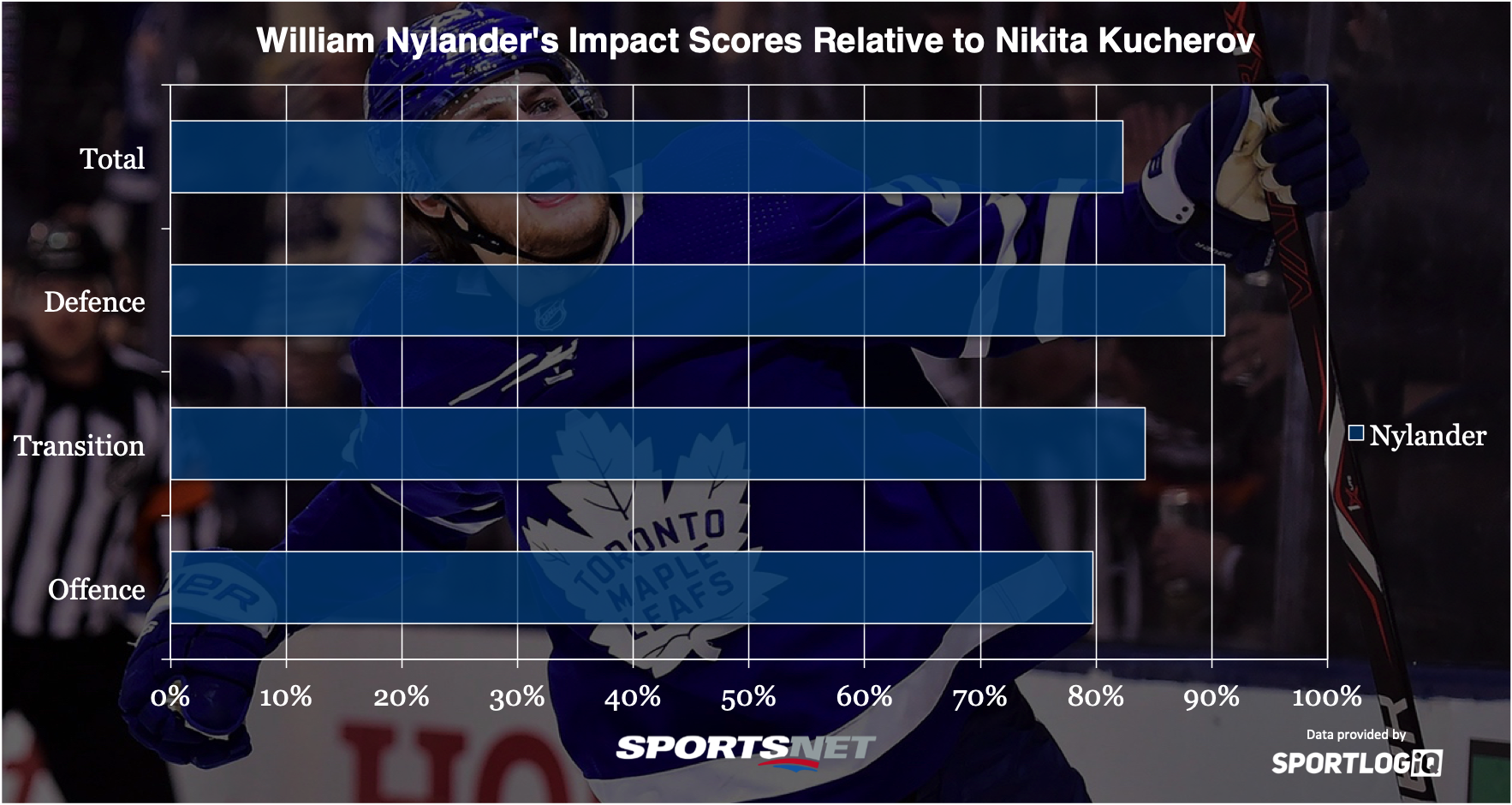Elias Pettersson is off to an historically great start to his NHL career, but with a high shooting percentage how sustainable is his performance? What is William Nylander worth against the cap, and in trade?
That, and more, in this week’s column.
SPOTLIGHT PERFORMANCE
We’re a little over a month into the 2018-19 season, and frankly I’m a little surprised at myself for not writing about Elias Pettersson yet. I’ve talked about him on Sportsnet 650, but you can only get into so much detail over the radio, and you definitely can’t start rattling off numbers before anyone changes the station.
Based on his play in Sweden, Pettersson was considered the best prospect not currently in the NHL heading into this season, but even with those lofty expectations I doubt anyone believed he would be just the fifth player in the past 100 years to score 10 goals in his first 10 games. The fact he’s done so with a concussion in the middle of it, while putting up five more points than the next highest-scoring Canuck in three fewer games than Brock Boeser and six fewer than Bo Horvat, is astonishing.
The combination of scintillating skill and things breaking nicely for him early in his career has made Pettersson a household name in what would be a cup of coffee for most 19-year-old players.
While his shooting percentage is crazy high at 34.5 per cent, it’s actually gone down since he returned from injury — a six-game stretch where he’s scored five goals and nine points. Obviously, he isn’t going to continue to score on more than a third of his shots on goal, but how sustainable is his scoring? Let’s look at his 5-on-5 shooting to see what we can expect.

When you watch Pettersson it’s obvious he’s extremely dynamic, and not just as a shooter. Putting it all down numerically it’s clear how little interest he has in shooting from areas that aren’t dangerous.
At 5-on-5 Pettersson has put 23 shots on net and scored eight times. That’s a conversion rate of 30.43 per cent, which is extremely high, but maybe not as bound to regression as it looks on the surface. No player in the NHL this year with at least 10 shots on goal is getting a higher percentage of their chances from the slot.
In fact, a league average shooter, not even just forwards, would be expected to score on 15.1 per cent of the shots Pettersson has taken based on location alone. Then you need to factor in that 47.4 per cent of Pettersson’s chances on net have come off the rush, a monstrous total of the most dangerous type of chance. As for the rest of his chances, 50 per cent are either preceded by a cycle pass or a rebound.
So for the sake of argument, let’s say Pettersson’s scoring chance rate and the type of chances he gets produces something around a shooting percentage of 20 for an average player. That’s a feat in and of itself, but how far above average of a shooter is Pettersson?
It’s a stretch to say he’s better than say, Patrik Laine, who is more than double the NHL average’s expected scoring rate on his shots. But let’s say Pettersson is a star-quality shooter, which is about 33 per cent better than average. That would mean Pettersson’s expected shooting percentage at 5-on-5 is 26.7 per cent so far, which is flat out remarkable.
So sure, he’s overperforming to start his career, but even after accounting for a “normal” shooting percentage on the shots he’s taken he would be on pace for a 43-goal season instead of the 76 goals he’s currently on track for. That’s nothing to sneeze at. Also noteworthy: he scored on 21.2 per cent of his shots in Sweden last year.
Oh and he’s also driving possession five per cent better than his teammates and draws calls at a ridiculous rate. This kid is a game-changer for the Canucks.
THE QUESTION
Steve Dangle couldn’t go two weeks without forcing me to talk about the Maple Leafs, so he asks…
What is William Nylander worth against the cap, and what would the Leafs have to get in a trade for it to be worth moving him?
This is a tough one because I’m no cap guru, though if you’re interested in comparables, go check out Matt Cane’s work on contract predictions.
The best way I can figure to ballpark Nylander’s actual, intrinsic market value would be to lean on the work I did over the summer on the positional ranking project for Sportsnet.
Nylander debuted there this year as the ninth-ranked right winger in the NHL, just a hair behind his teammate Mitch Marner. But the question of how much he’s worth has to start with the best player at his position. Luckily that player is Nikita Kucherov, who just signed an extension with the Tampa Bay Lightning, so we can compare Nylander to him directly.

Overall, Nylander impacted the game over the past three seasons at about 82.3 per cent of what Nikita Kucherov did, which is a lot better than I had expected going into this. So if Nylander were an unrestricted free agent, I would expect fair market value for his talents to ring up a cap hit of $7.82 million. But,; of course, Nylander is not an unrestricted free agent.
Whether it’s fair or not, restricted free agents get paid less. An example of this is David Pastrnak, who was the sixth-ranked right winger this year and is making an annual average value of just $6.66 million on his current contract.
The cap has gone up since he signed, and Nylander hasn’t been as good as Pastrnak so far in his career, so anywhere from $6.5 million to $7 million sounds about right for the Maple Leaf. What’s interesting is that even if he were an unrestricted free agent, Nylander’s reported ask of $8 million is a little high.
As for what he’s worth in trade, a top-20 winger in the NHL probably isn’t worth a top-20 defenceman, but considering Nylander has the potential to play centre in the NHL, an opportunity he won’t get with the Maple Leafs now that they’ve signed John Tavares, let’s say he’s worth a defenceman in the 20-35 range. That’s essentially the lower end of No. 1 defencemen in the league. And we’d want one who has a similar age.
That leaves us with a list of Colton Parayko, Jaccob Slavin, Dougie Hamilton, Shayne Gostisbehere, Ivan Provorov, Brett Pesce, and Oscar Klefbom. There are some interesting names on that list, but remember the Leafs need right-shot defencemen only, unless they want to do a bigger shakeup of their defence core. That rules out everyone but Parayko, Hamilton, and Pesce as potential one-for-one deals.
The scenario I find interesting is if the Leafs want to shake up their defence more deeply, acquiring Klefbom would seemingly be a good fit for both teams. Edmonton desperately needs help on the wing and Klefbom has great potential that has languished in Edmonton.
[snippet ID=3322139]
BUY OR SELL
• Phil Kessel is off to yet another ridiculous start (16 points in 14 games), and this season he’s not just doing it on the power play. So far he’s creating chances for teammates and getting his own chances at 5-on-5 at top-30 rates among forwards. He’s still Phil the Thrill.
• What’s happened in Chicago deserves a deeper dive, but one thing I’m interested to see is how much of their playing style is due to the roster, and how much was due to coaching. In each of the past four years, the Blackhawks lead the league in per cent of zone entries that were controlled, averaging 61.4 per cent overall, where the league average is 48.5 per cent. No other team has had a single season in that time above 57 per cent controlled entries.
• Nico Hischier is clipping along at nearly a point per game, and the crazy thing is he’s been unlucky as a shooter. He boasts the only rate even close to Pettersson in the percentage of his shots that come from the slot at 80 per cent. He’s already great and he’s going to score a lot more.
• Dougie Hamilton is third in the NHL in shots on goal, and second in shot attempts per minute at 5-on-5 — not just among defencemen, but among all players. They’re not all from the perimeter either. He’s currently putting up as many 5-on-5 scoring chances per minute as Nazem Kadri, Jonathan Drouin, and Jonathan Huberdeau. He’s going to score a lot playing this way.
[relatedlinks]







